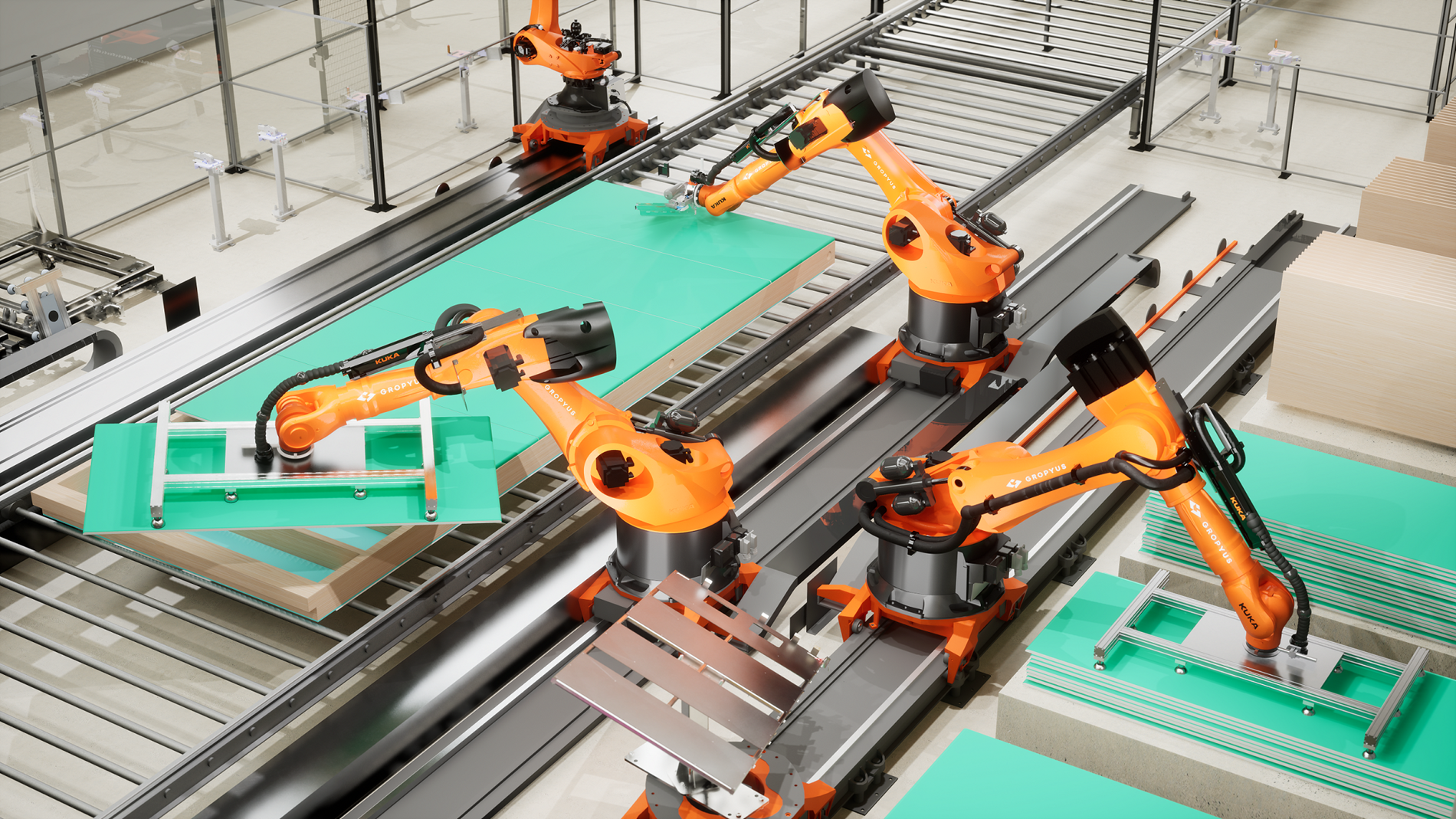The construction industry, traditionally seen as a stronghold of manual labor and on-site work, is undergoing a transformative shift toward offsite, technologically advanced production environments. This shift is significantly driven by the integration of Artificial Intelligence (AI) into offsite construction factories, a trend that is not only underway but also set to deepen in the coming years.

all photos and renderings – Kuka
It’s time we acknowledge AI’s pivotal role in automating a wide array of production activities, from initial design and planning phases to the actual construction processes like component assembly. This integration heralds a new era of efficiency, precision, and cost-effectiveness in construction, with technology playing a central role in reshaping production lines.
A Spotlight on Automation Vendors Leading the Charge
Several forward-thinking automation vendors are at the forefront of incorporating AI with robotics and automation in the construction sector. Companies such as Autodesk, with its BIM (Building Information Modeling) solutions, are revolutionizing how construction plans are designed, visualized, and executed, making projects more efficient and less prone to errors. KUKA provides robotics solutions that automate complex construction tasks, from welding and material handling to component assembly, all under the watchful eye of sophisticated AI systems. Many innovative companies are driving the construction industry towards a future where technology and human expertise converge to create unprecedented value.
The Evergreen Need for Human Skill and Ingenuity
Despite the march of automation, the essence of human skill and ingenuity remains irreplaceable. AI’s takeover of repetitive and hazardous tasks does not eclipse the need for human oversight, maintenance, and strategic decision-making. Instead, it heralds a shift in the nature of work within construction. Humans are now collaborators with AI, harnessing the latter’s efficiency to enhance productivity and innovation. This synergy between human and machine opens up new vistas for skilled labor, where programming, machine maintenance, and supervisory roles over automated processes become the new norm. Such a landscape is particularly appealing to the younger generation, including women, who may have previously overlooked production work in construction due to its manual labor-intensive image. The technology-driven environment now promises dynamic and engaging career opportunities, breaking down traditional gender and generational barriers.
Leveraging AI for Seamless Production
To ensure the uninterrupted operation of offsite construction factories, AI can be deployed in several critical areas:
Predictive Maintenance: Utilizing data analytics, AI can predict equipment failures before they occur, scheduling maintenance proactively to prevent unexpected downtimes.
Real-time Monitoring and Adjustment: AI systems offer the capability to monitor production processes in real time, adjusting parameters on the fly to optimize efficiency and mitigate issues swiftly, far outpacing human response times.
Supply Chain Optimization: AI’s predictive analytics extend to supply chain management, ensuring materials are ordered and stocked in alignment with production schedules, thereby avoiding costly delays.
Quality Control: Through advanced imaging and sensor technologies, AI enhances quality control, detecting and addressing defects early in the production cycle.
Worker Training and Assistance: Leveraging AI and augmented reality (AR), training and on-the-job assistance become more interactive and effective, facilitating smoother adaptation to technological advancements.
Embracing the Future with Thoughtful Integration
As AI’s role in offsite construction and manufacturing sectors grows, the benefits become increasingly clear: enhanced efficiency, reduced costs, and improved product quality. However, realizing these benefits requires more than just deploying new technologies; it necessitates a thoughtful integration of AI into the existing ecosystem, continuous training for workers to skill up in new technologies, and strategic planning to ensure the workforce transitions smoothly into this new era.
The construction industry’s future, therefore, lies not just in embracing AI and automation but in fostering a culture of innovation, learning, and adaptability among its workforce. This approach will not only ensure that factories run smoothly.
Gary Fleisher is a renowned blogger and commentator on construction and housing trends, known for his insightful analysis of the industry.



